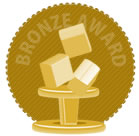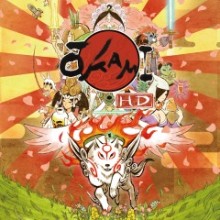Okami HD (Xbox One) Review
By Coller Entragian  16.01.2019
16.01.2019

PlayStation 2 was home to some of the greatest videogames of all time. Between such industry changing hits like Grand Theft Auto 3, Zone of the Enders, Shadow of the Colossus, God of War, Metal Gear Solid 3, Devil May Cry, and the Onimusha series; Sony's second console cemented itself where action-games were redefined. Capcom being no stranger to delivering some of gaming history's most revered action-packed titles of all time, stepped up to deliver what would be the PlayStation 2's swan-song: Okami. Originally directed by Hideki Kamiya himself, his ambitious take on the Legend of Zelda formula would push the Sony console to its absolute limits, and take on a scope far bigger than any other game released by Capcom at the time. It nearly sank the company due to a costly development cycle - and, due to being released at the dawn of the new console generation, Okami was sadly ignored. Over the years, Kamiya's divine dog-Zelda game found its audience. Amaterasu, the protagonist, was even featured in some of Capcom's fighting games, and there was even a small-scale sequel for the Nintendo DS. Naturally, Capcom who has always ensured that their games be preserved on various platforms, would go on to port Okami to PlayStation 3 and 4, Wii, Xbox One, PC, and, finally, Nintendo Switch as Okami HD.
From its lush watercolour cel-shaded visuals, to the stylized characters and unique celestial brush mechanic, Okami HD has much more going on with it than just being a Zelda clone. It just may be even better than it in some aspects. Like Twilight Princess, Wind Waker, or Skyward Sword, Okami follows the tradition of an epic quest beginning extremely slowly in a humble village. There are no subversions here, no deconstructions, or twists; everything is done in very traditionally.
The expansive environments are meticulously designed- littered with secrets to uncover and every stick of geometry is careful considered. What really makes Okami so special, is its atmosphere which has no equal. There is a zen-like serenity when not in combat. This is helped by all sorts of Clover trickery like the lofting Sakura petals and fireflies. The way how all smoke or water effects are done in a swirly and appealing pattern, as if every element was designed to tap into the part of the brain the pleases the senses. Yet the game likes to have fun with itself by having all sorts of nuggets of silliness throughout the 40-plus-hour adventure.

When not taking in the spa-like ambience of Nippon, Amaterasu is going to probably get into a few scraps with all manner of yokai or kami. Kamiya, who would rarely shy away from technical and bombastic combat, aimed for something much simpler than his reputation is known for. This is not as complex or as fast as Viewtiful Joe, and is nowhere near as over-the-top as Bayonetta. Amaterasu is going to get a ton of moves, and there are even more hidden ones to unlock, yet most of them are useless since very early on the cherry-bomb proves to be way too effective in combat.
The celestial brush has its uses that have utility while exploring, but forget all of that because bombs are going to make short work of basically everything for 80% of the adventure. Outside of boss battles, don't expect much variety. This is not exactly terrible, but it definitely seems like it was aimed more towards younger gamers who are fans of The Legend of Zelda. It must also be stressed that how the celestial brush works might be a little finicky when used like a literal drawing tool. Somehow, everything works so much more effectively when the brush strokes are executed more like a fighting game input.

This still is one of the better 3D action-adventure games available, but that still does not mean it hasn't some questionable design choices - this was one of Kamiya's earlier creations, after all. Completely extraneous features that only make what is already an easy game even easier, like the astral pouch, could be deleted entirely, and nobody would ever notice. Having to spend karma/experience points to increase the wallet capacity makes no sense at all and is obvious filler to arbitrarily create some kind of money sink for players; having to strike names of rare enemies off a list with the brush mechanic is pointless. Generally, there are lots of little irrelevant features or moments like these throughout - they were lame in 2006, and they're still lame in 2018.
Hideki Kamiya is a man of conviction and is truly a passionate game designer. He makes no compromises for anyone, and knows exactly what he wants. This comes as both a blessing and curse for Okami HD, since its best and worst qualities are a result of the director's stubbornness. This quest is a long one, and it is made longer due to some excessively verbose dialogue scenes. Kamiya himself wrote this game, and it's easy to understand a creator never wanting to compromise on his vision, but at the expense of the audience things can get out of hand.

Even when some scenes are brief, there can still be some pretty frequent interruptions and the entire journey is peppered like this. Possibly one of the best features that was added to this port of Okami HD, is that users can skip dialogue, and even entire scenes. This is great for replays, but for a first-timer, it can get really exhausting. Regardless of the overly wordy campaign, the pay-off it all leads to is completely earned. If anything, the writing here makes a case for cut-scenes, thanks to an emphasis on humour and comedic timing... something that just won't ever translate to gameplay. Let it never be said that Hideki Kamiya's stories are just excuses for action, because the man does get what an audience requires for emotional catharsis... even if he could still use an editor.
Fans of Okami will likely have already made-up their mind about it. This is an excellent port of the PlayStation 2 classic, revised in HD. Some things have been added for the better, like the option to skip dialogue, and the extremely fast load times vastly improves the pacing of an already long and epic journey. Not everything is perfect however; the draw distance is still sorely lacking, and is exactly as it was on the PlayStation 2. Even the PlayStation 4 and Switch versions have this issue, so it is probably something to do with the game's engine and logic - it would also explain why this is still running at 30 frames per second. It is impressive that this was a PlayStation 2 game where the developers had to come up with ingenious programming tricks to make the game work at all; it is a shame that that same technical prowess is also the restriction why Okami HD can't ever be better than it could.

Cubed3 Rating
Very Good - Bronze Award

Okami HD might still have some of its original niggling annoyances, but in a way, it wears these on its sleeve. Titles like this are very rare, and are becoming less and less likely to be made with every passing year, as publishers are opting for more homogeneously designed releases. When Clover was around, it strove for interesting and eclectic action games, like God Hand and Viewtiful Joe. The team lives on in the form of Platinum Games, but even now it is a developer that plays it much safer than it used to. As far as conversions go, Okami HD is solid. Some aspects should be better when considering today's standards for remasters, but when the core experience is still able to hold up for over 10 years, it's hard to complain.

![]() 7/10
7/10
![]() 0
(0 Votes)
0
(0 Votes)
 Out now
Out now  Out now
Out now  Out now
Out now  Out now
Out now Comments
Comments are currently disabled

 Sign In
Sign In Game Details
Game Details Subscribe to this topic
Subscribe to this topic Features
Features







 Top
Top

